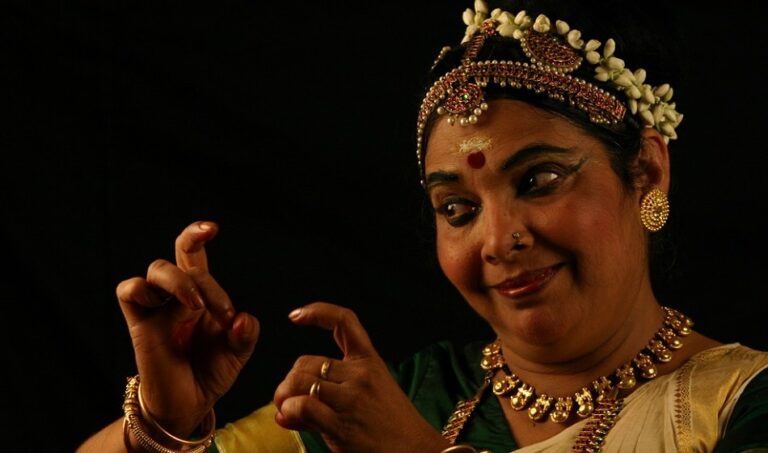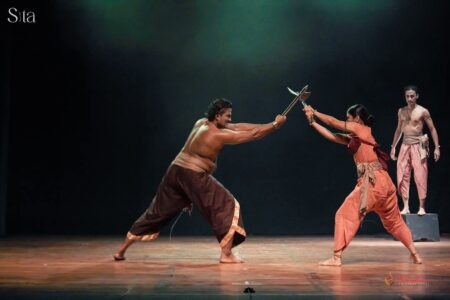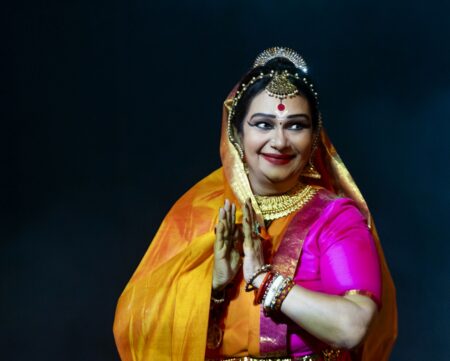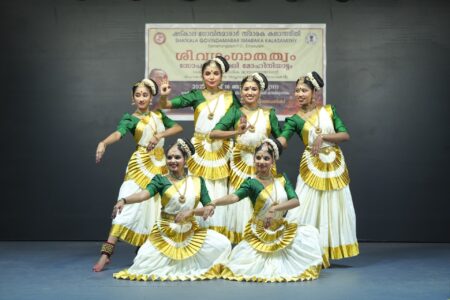Sankaracharya mentions the lasya or grace of the Goddess in several of his verses, while the recurring theme of Mohiniyattam – the pain of a Nayika separated from the Nayaka, can be metaphorically compared to Jīvātma yearning to be reunited with the Paramātma.
Swāmi Adisankaracharya is believed to be a contemporary of the first Kulasekhara. He was instrumental in assimilating different philosophies that existed during his time and defining the philosophical and spiritual elements of Hinduism as we see it today. Colossal changes were taking place in the field of spiritualism during this period. It is believed that Sankaracharya propounded the Ṣadmata Samannvya (Śaivaṁ, Vaiṣṇavaṁ, Śāktēyaṁ, Kaumāraṁ, Gāṇapatyaṁ, Sauravaṁ). He consolidated the doctrine of Advaita Vēdānta (Nondualism) and established the concept of Advaita, the unity of Ātman and Nirguṇa Brahman by validating his arguments on the basis of the Vēdas and other Hindu scriptures. In essence, Kerala was witnessing a new cultural and spiritual awakening during this period.
Jivatma and Paramatma
The unity of the Jīvātma and Paramātmas was the basic tenet of the dance form brought to Kerala by the Dēvadāsi dancers. The themes of many of the Padams that were created for Mohiniyattam, including those by Swathi Thirunal, revolved around the theme of the agony and pain of the Nayika who is separated from the Nayaka, and the Sakhi — the friend helping her in reaching the Nayaka. This storyline is considered to metaphorically represent the Jīvātma yearning to be reunited with the Paramātma, and a spiritual master or Guru, like a good friend, facilitating the reunion by imparting wisdom.
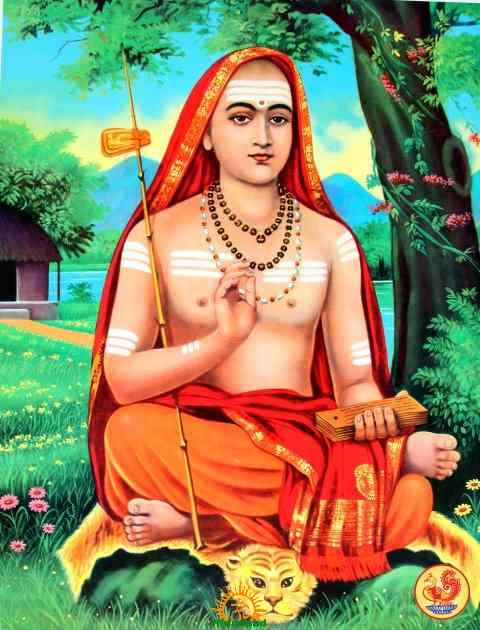
Sankaracharya wrote over 300 different texts on philosophy related to Vedanta. Soundaryalahari is one of its kind among all those texts which makes a bridge between the Vedantic and Tantrik traditions of India. Superficially this text is written in praise of Goddess Parvathi and elaborate in detail the aesthetic beauty of the Goddess. In several verses of this text, Acharya touches upon Lasya or the grace of the Goddess. For example in the sloka which starts with Tavadhare mule sahasamayaya lasya paraya, Acharya describes the Goddess as the epitome of grace, Lasya. In verse 54, Acharya describes the Goddess in all nine Bhavas or emotions. It can be safely inferred that all these relate to the aesthetic values as observed in the Abhinaya and dance of that period.
Golden age of dance
All these might have greatly influenced the dancers of Kerala also. One cannot deny the fact that after the Saṁghaṁ works and Chilappatikāraṁ, many transformations took place in the women’s dance forms of Kerala. Kerala had a long history of trade and cultural relations with the world through its seas. Similar exchanges also occurred through the land into Tamil Nadu and the rest of India. The arrival of Sanskrit on the shores of Kerala led to the evolution of Malayalam as a separate language, different from old forms of Tamil. Sanskrit formed the basis of the traditional theatre form of Koodiyattam practised in Kerala. All these influenced the art and dance forms that existed in this region. Considering all this evidence, the period of Sankaracharya and Kulasekhara could be considered the golden age of music and dance in the region encompassing Kerala.
Read Part 9
(Assisted by Sreekanth Janardanan)

